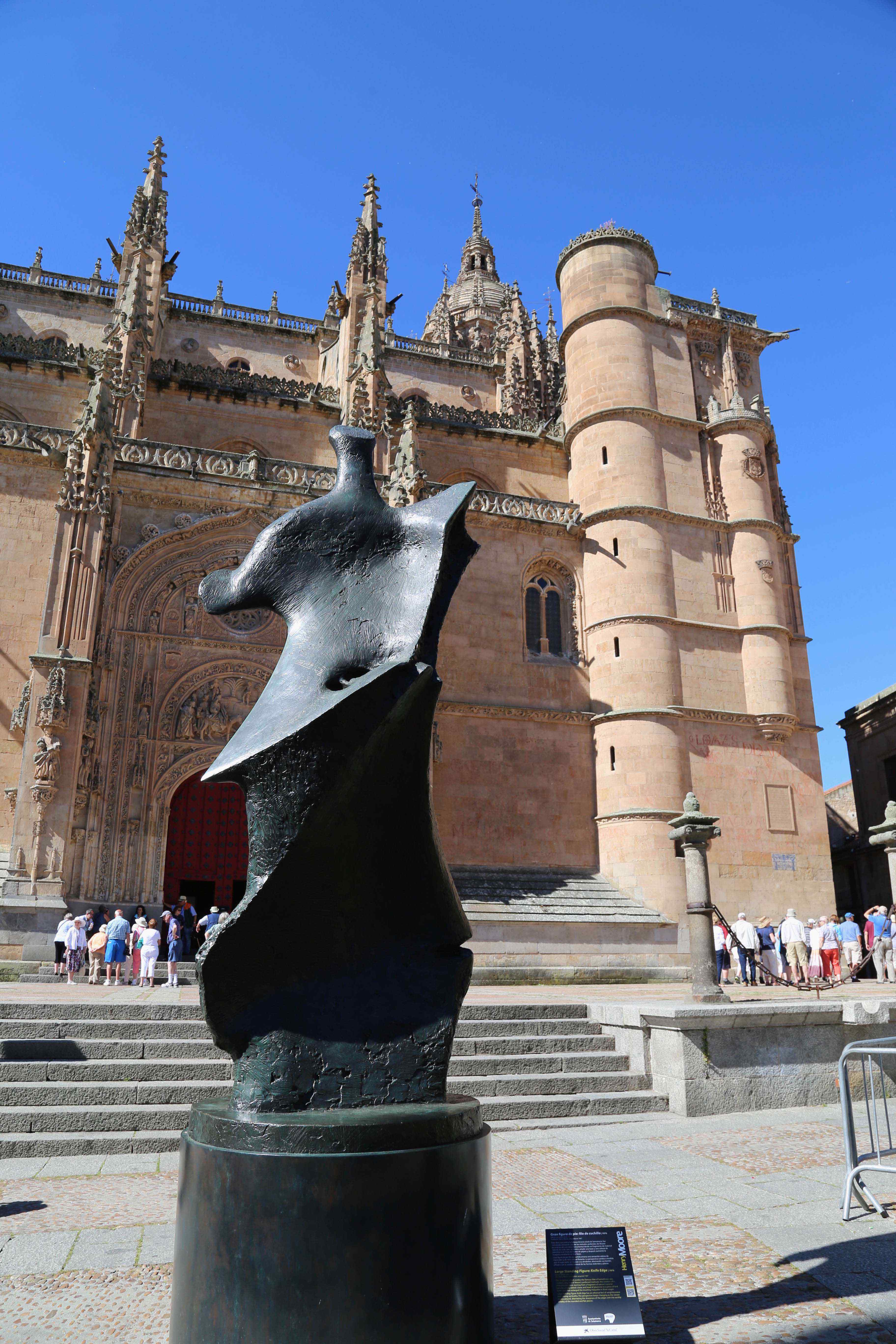
Salamanca is home to what is considered to be the third-oldest continually operating university in the world. A bit of old and a bit of new counterbalance each other with the statue in front of the building.

Salmanca came into its glory during the Golden Age of Spain, when new ideas and riches from the New World funded grand ambitions.
Call it what you like – a thirst for knowledge, insatiable curiosity, or simply a keen desire to learn and know more, education is an aspirational element of the human spirit. For more than 900 years students from Spain and around the world have been attending classes at what is now Universidad de Salamanca, Spain, one of the oldest continually operating universities in the world.

Four storks and three bells are a bookend to Salamanca — an old facade in the city center provides African storks a roost to raise their young.
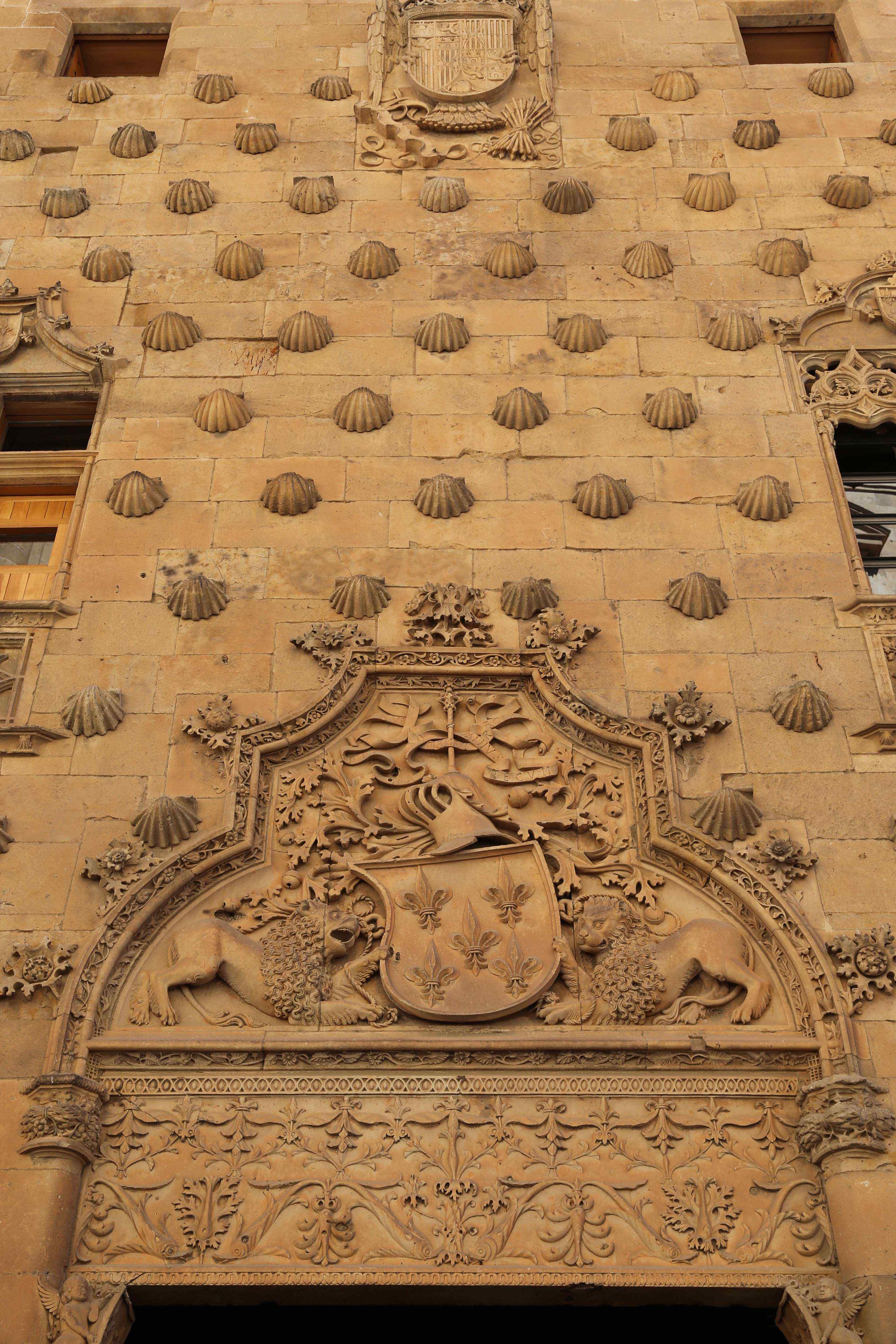
It is clear this facade known as the House of Shells, took a considerable amount of time — and money — to be completed.
But a considerable amount of time – and history – would pass before a university at Salamanca could be firmly established under Spanish rule. The area of western Spain was long considered a desirable place since its founding in ancient pre-Roman times. In 220 BC Hannibal conquered the area. The Romans then captured it from the Carthaginians. (A bridge still in use in the city was built by Romans in the 1st Century AD.) Other conquerors included Alans (thought to be of Iranian origin), Visigoths, Moors, and finally Christians would settle what is now Spain. (As late as 1492, Spain was still in the process of consolidating her borders.)
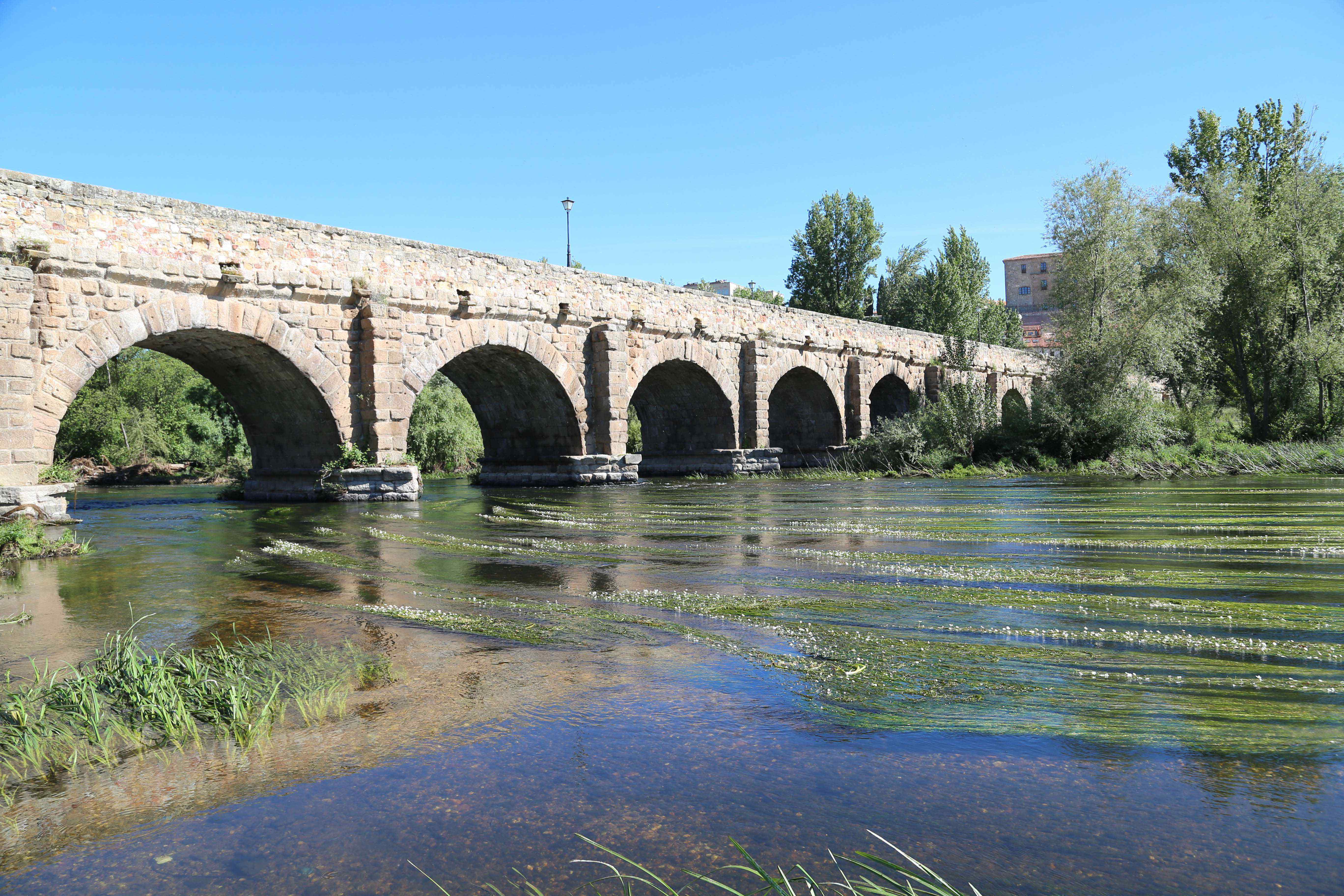
This bridge was built by Romans in the 1st Century AD and is still in use today.

Lending more weight to the notion that Salamanca is an old city with a young heart, the Roman-era bridge also serves as an anchor point for outdoor activities as the New Cathedral and the old city rise in the background.
For many people, 1492 is a well-known date; in October of that year Christopher Columbus landed in the New World, claiming it for Spain, and setting off centuries of conquest, murder, and the pillaging of lands and riches from indigenous people. The gold that flowed from South America fueled Spanish wealth and ambitions, and the reverberations in the Americas are still being felt today. Prior to setting sail Columbus spent years traipsing across Europe trying to convince a wealthy patron he could get to the East by sailing west. His ideas were occasionally heard and his proposals were dismissed more often than not.

A courtyard on a quiet morning belies the centuries of history that have passed before.

A quiet hallway provides cooling shade from the hot sun of a Salamanca summer.

The stone carving along the edge of the staircase is mostly worn of color, but still tells an interesting tale.
In late 1486 or early 1487 Columbus pleaded his case at the University of Salamanca before a body of scholars who had been asked by the king and queen to evaluate his proposal. Ultimately the assembled body rejected his ideas, based in large part on Columbus’ assertion that an Atlantic crossing would be a relatively short and easy task. Surprisingly, Columbus’ ideas never considered the existence of the Americas, only that an ocean lay between Spain and the Far East.

Christopher Columbus may well have walked this way on his way to pitch his idea of sailing west to get to the Far East.

Part of the beauty of Salamanca is so much incredible architecture can be seen throughout the old city such as this exterior of the Clerica Church.
By the time Columbus left Salamanca empty handed, the university had already become a highly respected institute of learning. In 1218 Alfonso IX of León (king of León and Galicia), granted the university a royal charter, even though students had been attending classes there as far back as the early 1100’s AD. By the 16th Century AD there were approximately 6,500 students attending the university in the city that had a then-population of about 24,000 people. The university is considered the third-oldest continually operating institute of higher learning in the world.

The facade of the Convent of Saint Stephen attests to the deep and abiding faith Spain had in the Catholic Church.
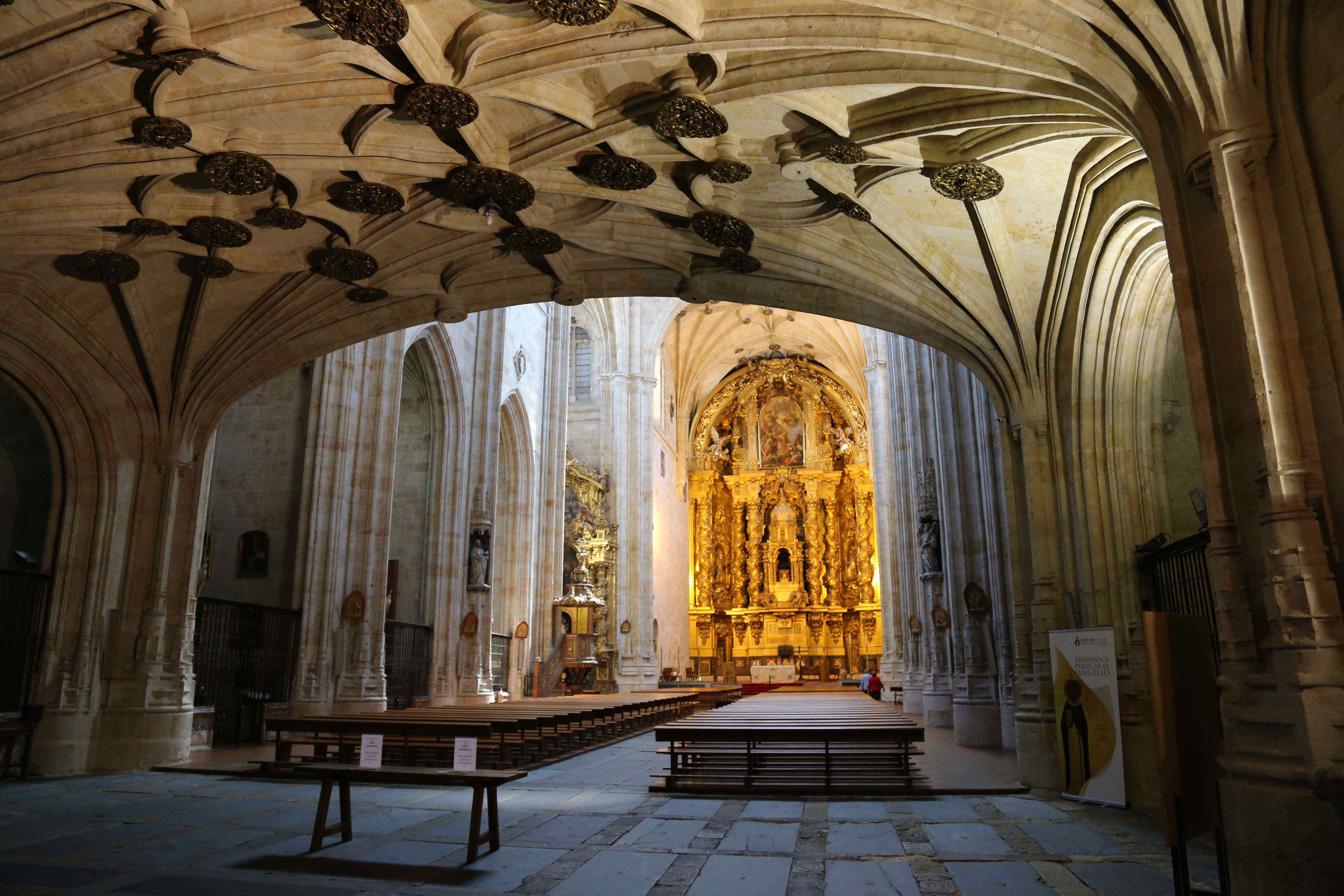
Spanish royals and nobles lavished vast sums of money for the construction of churches in Salamanca.
Over the centuries Salamanca University has contributed to a number of important academic milestones. For example, it was here that Medieval notions of law were replaced by concepts that people had a right to life, the right to own property, and there was an acceptance of freedom of thought and basic human dignity. Today the university is home to colleges of medicine and science, law, humanities, and liberal arts, and it offers more than 250 academic programs. There are now almost 32,000 students in attendance and the city of Salamanca has a population of approximately 170,000 people. The university and tourism account for major sources of revenue in the city.

Students have been strolling these grounds for centuries, discussing new concepts as they absorbed new ideas.

African storks have a number of places they can call their summer home thanks to the many roosts found in the city.

Swifts are just that — fast birds with extreme maneuverability, they gobble up insects on the fly.
Visitors – as well as students – find much to enjoy in the city. It goes without saying that Salamanca, approximately 120 miles west of Madrid, has the feel and vibrancy of a university town. Its popularity as a first-rate venue to learn Spanish results in a large international student population. And the centuries of successive peoples who have called the place home blends in a rich tapestry of cultures. Fans of architecture can find throughout the city excellent examples of Roman, Gothic, Moorish, Renaissance, and Baroque styles. In 1988 UNESCO designated the city as a World Heritage Site.

The wealth and grandeur of Spain during her Golden Age is evidenced by the beauty of this courtyard and buildings.
Salamanca may be an old city, but one with a young heart. Visitors will leave with a lasting appreciation of the history and importance this city along the Tormes River has had on Spain, the world, and the ideal of advanced education.
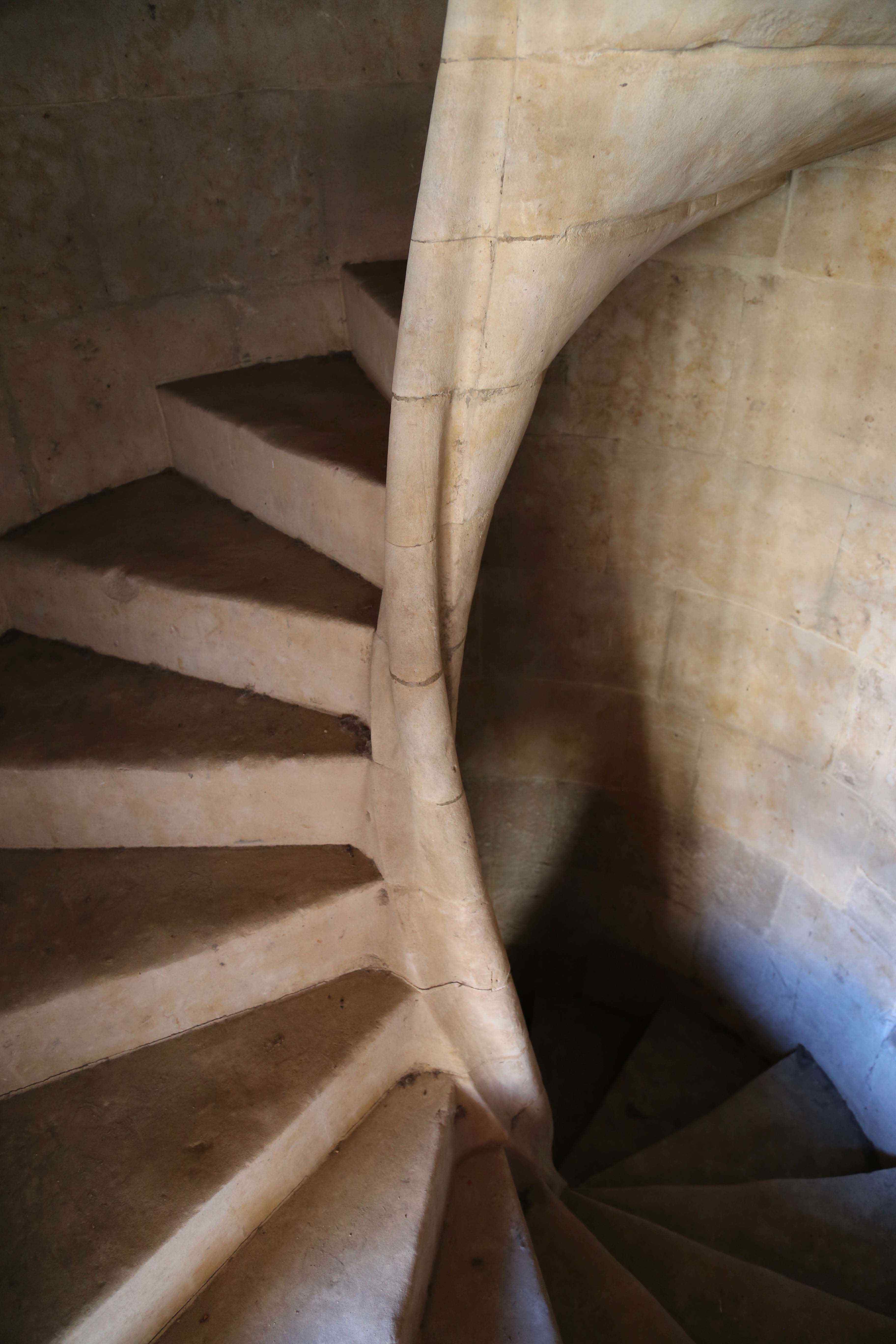
How many feet have trod the steps of this winding staircase?
For more information about the history of Salamanca, Universidad de Salamanca, click over to these websites:
blueosa.com/5-reasons-absolutely-must-visit-salamanca-spain/
telegraph.co.uk/travel/destinations/Salamanca
christopher-columbus/spain-1485-1492
